In the past month, a lot more of us have been working from home. Whilst this may be the norm for some of you, others might be used to walking around the office or attending various errands at work that keep you on your feet.
Perhaps many of you have standing desks, comfortable desk chairs with lumbar support and eye level screens at work – but not at home. Even so, 9 hours sat down at work can still be problematic, unless we sit correctly.
So…do things like chairs and screens really make a difference to our posture?
The answer is YES!
Take a look below at a typical set up, in this case Michael, one of our Sports Therapists, working from home. We have identified areas that become very tight when sitting in the same posture for long periods of time. Read on to find out how your body works…
Often, each aspect of your posture, presents with problems in pairs. Which is good, because it means we can fix them together too!
Let’s start from top to bottom…
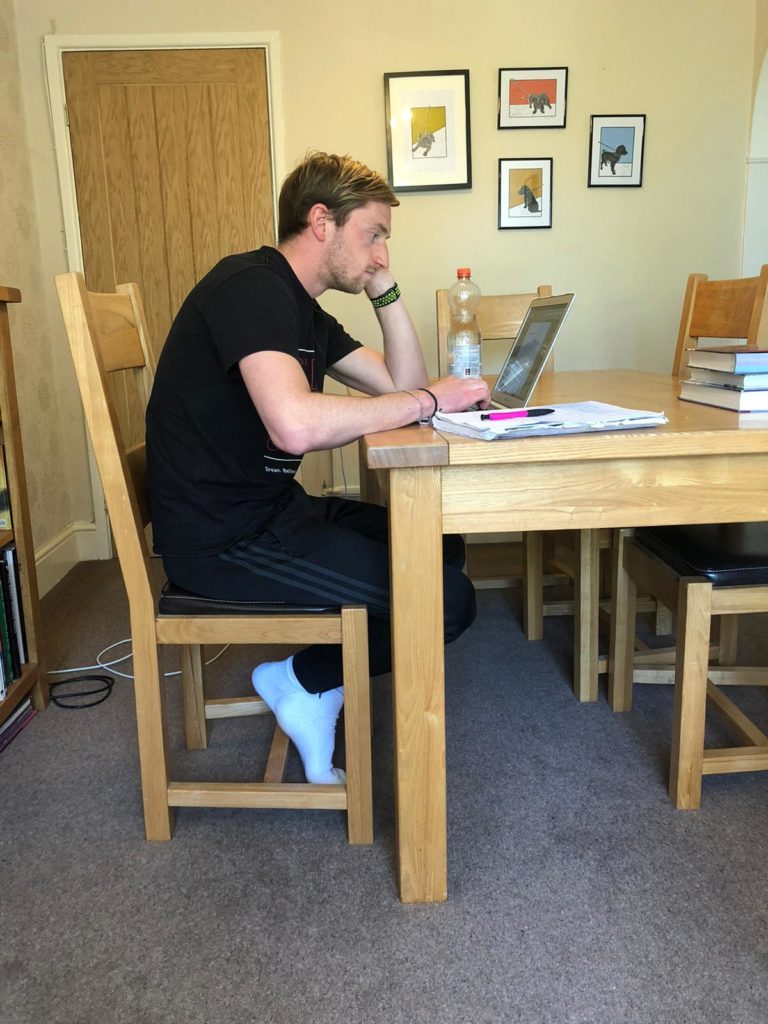
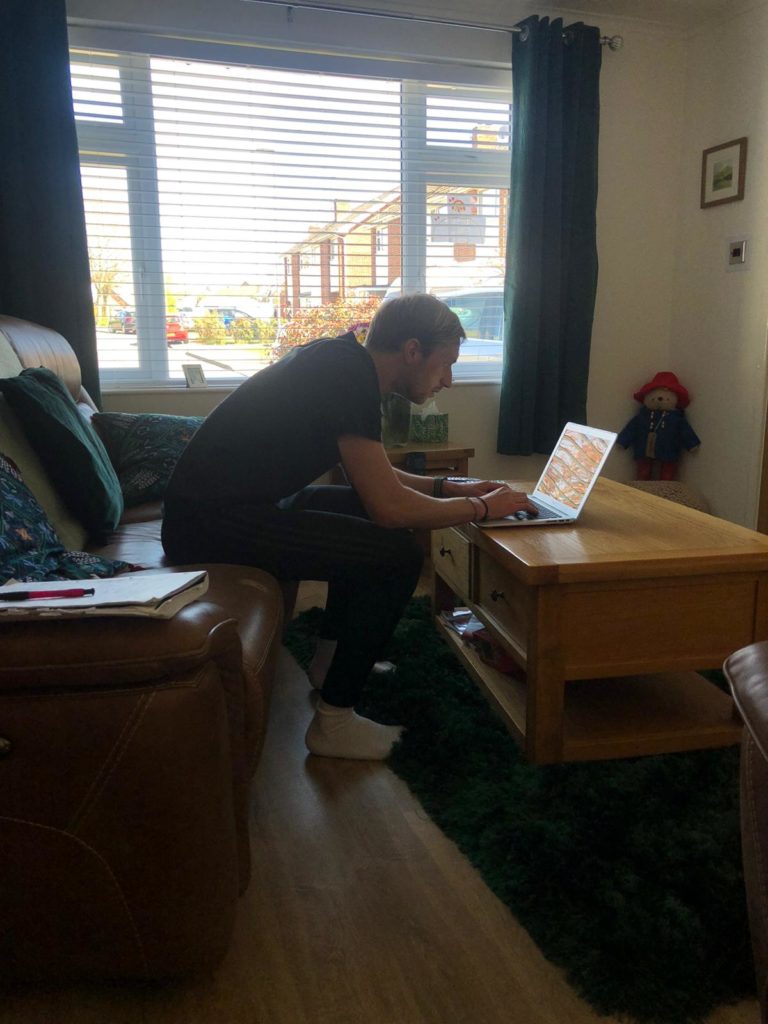
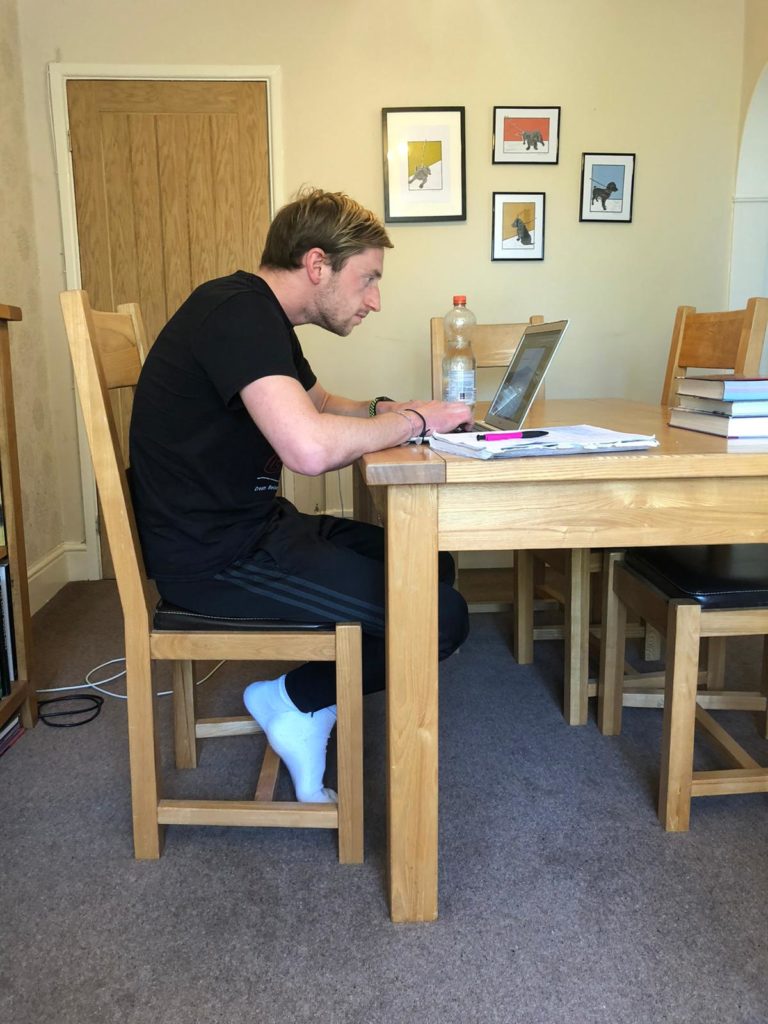
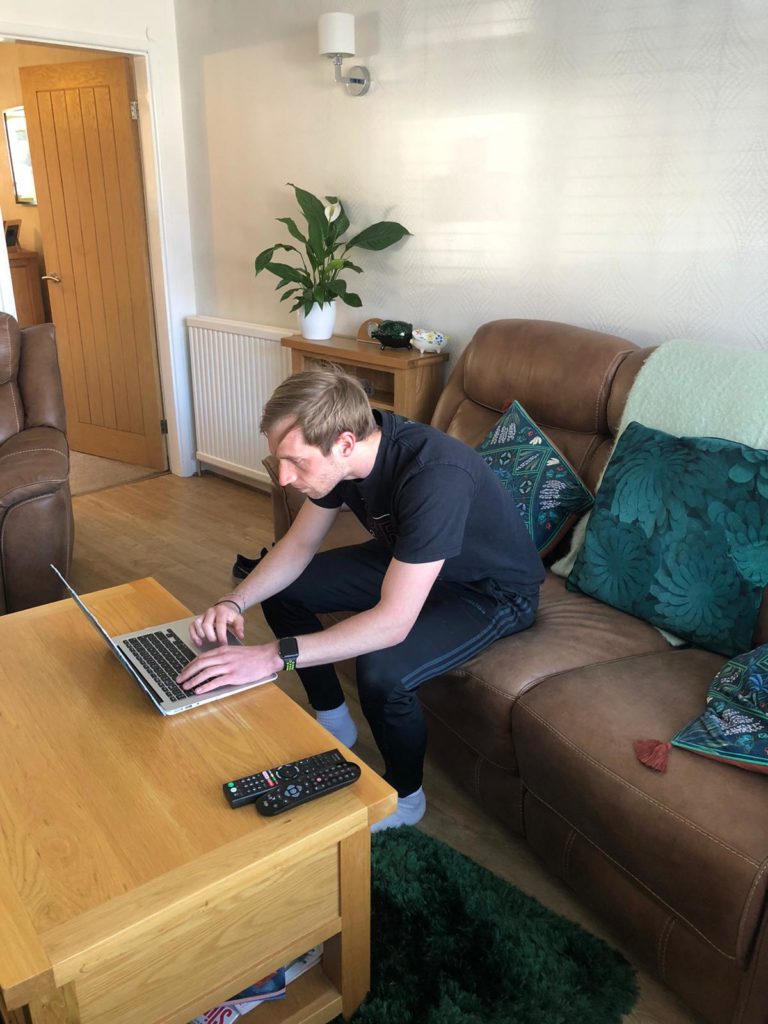
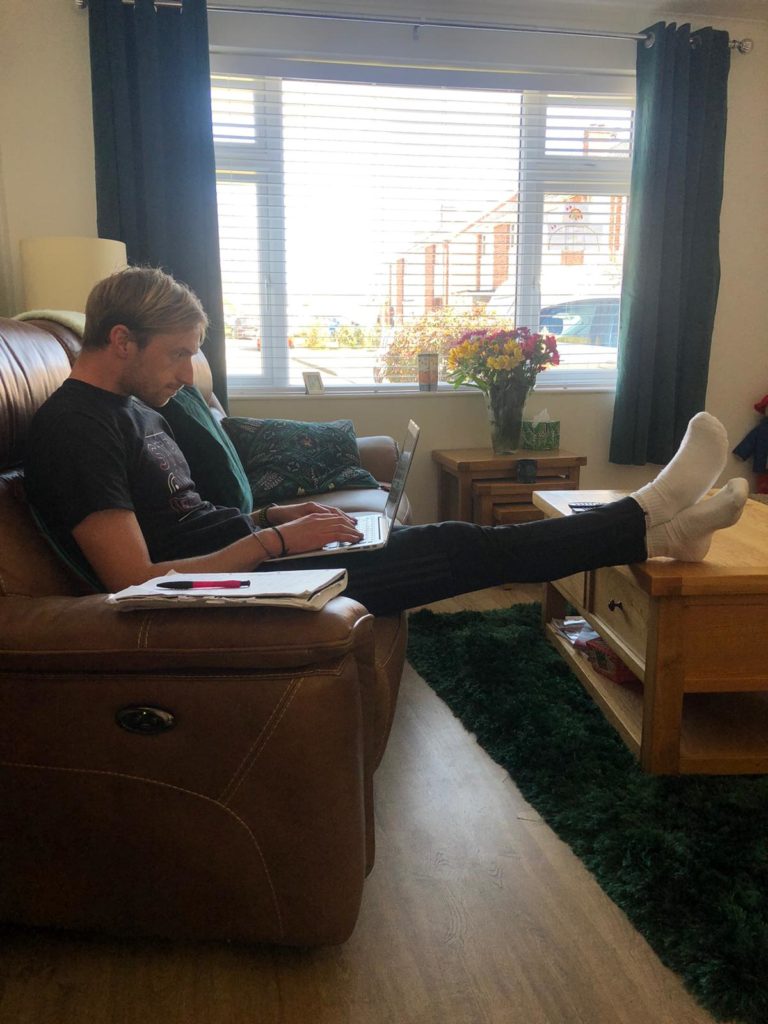
Due to the height of the screen, Michael is having to arch his upper back and translate his head forward. This gives rise to 2 problem pairs.
The first, is our head translation. Head translation is when our head moves forward in a straight line, perhaps to get closer to the screen. Consequently, our sternocleidomastoid, located at either side of our neck, becomes very tight. On the other side, we have our upper fibres of trapezius (UFT), behind our neck. These are being pulled forward, but also have to counter act this, by pulling themselves to keep the head up- because heads are very heavy!
With the added stress of work (which also usually accumulates in our UFT), we allow our shoulders to rise up to our ears! Tightness in the UFT, especially under the base of the skull, can give rise to headaches. Not only this, our cervical vertebrae (spine in the neck), undergoes compression, which may be problematic.
An arched upper back, often consists of forward or drooped shoulders and a noticeable rounded thoracic spine (mid back). Our pectorals, located on the chest, become very tight due to our shoulder posture, consequently, our back muscles including our rotator cuff become long and weak, so much so that they actually feel tight- like a taught elastic band.
Rounding our upper back, unfortunately means our lumbar spine (low back), is also put under a lot of strain arching forwards. Excessive leaning forwards in our low back, increases our prevalence for disc issues. Our core muscles remain as the main stabilisers for lumbar stability- in this scenario, our core is likely to be inactive.
Moving further down the chain, any seated posture will always encourage hip flexors to shorten and thus tighten. Furthermore, our Glutes (buttocks) find it much harder to activate in a seated posture, due to the position of our pelvis. This is why standing desks have been encouraged more and more over time, so that our hip flexors can remain at a longer length and it encourages glute activation.
We now have a tight neck, pectorals and hip flexors, and it doesn’t stop there. Our hip flexors are very strong and have the tendency to pull our pelvis into an anterior tilt (meaning it has been rotated forwards). This consequently, has now tightened our hamstrings. My last blog describes how tight fascia can affect us further down the chain. Here, our hamstring tightness is likely to be mirrored in our calf complex and even our plantarfascia.
We’re all at work the majority of the day, for 5 days a week- don’t let bad posture dictate the shape of your body for the rest of your life- because it’s likely these will cause a lot of issues on the way.
So let’s take a look at good posture. As you can imagine, a lot of this is to do the exact opposite, but requires a lot more conscious effort.
1. Position your screen at eye level- perhaps place your laptop on some books. This should help with your head posture. Keep your head back, almost like you’re trying to make a gentle double chin.
2. Don’t slouch. Pull your shoulders back and downwards. If you’re unsure how to pull downwards- shrug your shoulders…now do the opposite- this should help activate our lower fibres of trapezius.
3. Sit up straight. Our lumbar spine is now in neutral and our core is now easier to activate. Draw your belly button towards your spine to activate your core.
4. Alternate between sitting and standing. When standing, gently squeeze your glutes. If a standing desk is not possible, make an effort to get up and walk around for 1 minute every half an hour. If you do have to keep seated, you can still periodically squeeze your glutes. However, you may have to do a bit more self-release- this is in our next blog!
5. Correcting posture up the chain, should ultimately influence your pelvic position and tightness down the chain. However, I would still recommend to regularly undertake some self-release for the hamstrings calf complex and plantarfascia- so keep your eyes peeled for these techniques next week and on our social media platforms!
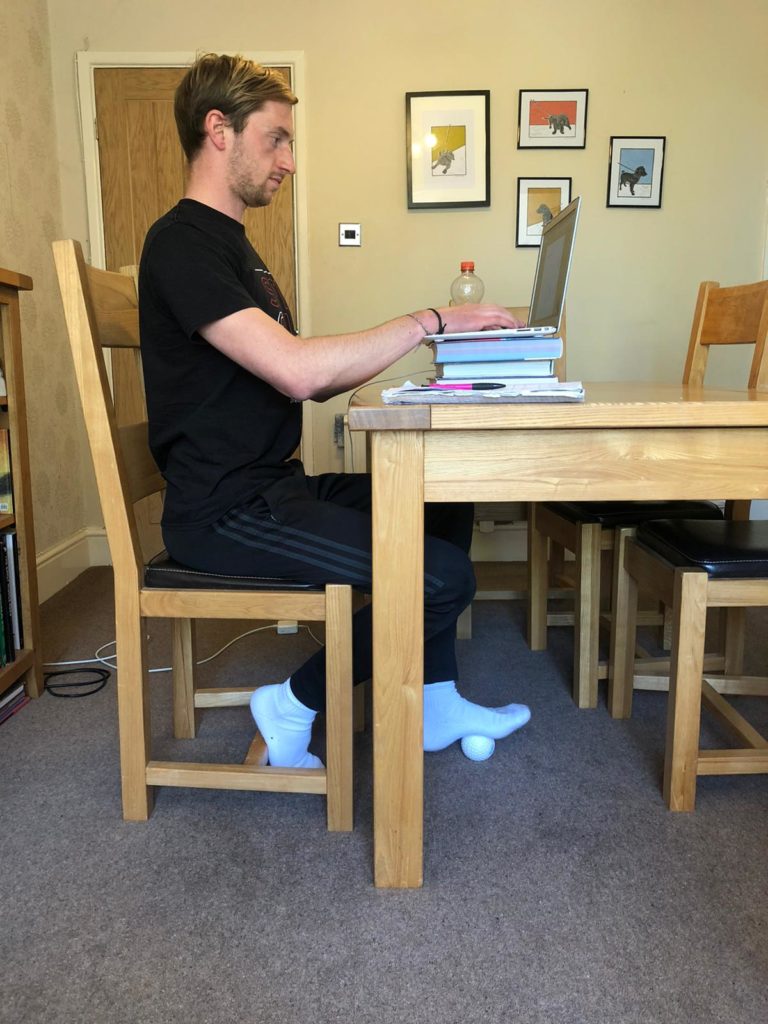
Now we have scrutinised desk posture, and encouraged you to stay upright, stay tuned as we discuss tips on how to promote healthy desk posture through exercises and self-release.
We understand that adopting this new posture for 9 hours a day can be tricky, and it’s likely that we all fall into our old postural habits. Next week, an introduction into desk exercises should help activate the correct muscles and we will also cover how you might apply these on a day to day basis.
Contact your local Physio in Leicester today – Function Jigsaw





